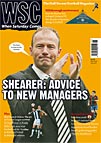 John Morrow examines a season in which football took a backseat to politics as Derry City were forced to resign from the league
John Morrow examines a season in which football took a backseat to politics as Derry City were forced to resign from the league
The long-term significance
The Northern Irish Troubles, which had broken out in earnest in 1969, cast a long shadow over football in the province as nationalist-supported side Derry City resigned from the league during the course of the season. Derry, whose Brandywell ground is located near the city’s Bogside area – the scene of fierce rioting in 1969 and Bloody Sunday in January 1972 – had been forced to play home games at Coleraine’s Showgrounds since September 1971 due to the fears of unionist-supported teams entering the area. Unable to sustain senior football, Derry City were put on the road to joining the League of Ireland in 1985 and remaining outside Northern Irish football to this day.
Story of the season
Given that the 476 people killed in Northern Ireland during 1972 was the highest single year total of the Troubles, and almost three times the previous year’s total, it was inevitable that the situation would overshadow events on the pitch. Facing not only possibly the bloodiest period in its history but also an uncertain constitutional future following the abolition of the old Stormont Parliament, football was fairly low in the priorities of Northern Ireland. With the national team playing their last game in the province against Wales in May 1971, a situation that persisted until 1975, the club game soldiered on but it was not left untouched by wider events.
Derry’s move to Coleraine had occurred the previous season when the Royal Ulster Constabulary ruled that the Brandywell was not safe due to its location. The matter came to a head in October 1972 when the club, virtually bankrupt due to the problems for supporters travelling the 30 miles to Coleraine during a time of extreme civil strife, requested a return to their home ground from the IFA. The matter was put to a ballot of league clubs, but rejected by a single vote. Derry resigned from the Irish League on October 13 and played in Sunday morning football for the next 13 years, occasionally seeking a return to the Irish League but always failing due to their insistence that they would continue at the Brandywell.
The off-field problems were unfortunate for Crusaders as they detracted from the north Belfast side’s first league win. Somewhat ironically the Crues admission to the league in 1949 had come following the resignation of another nationalist-supported team, Belfast Celtic. Under player-manager Billy Humphries, a product of the club’s youth system who made his name with Coventry City, little fancied Ards finished a close second in a season that saw both of the traditional “Big Two”, Linfield and Glentoran, struggle to make an impact. It was business as usual in the Irish Cup as Glentoran beat Linfield 3-2 in the final. Larne, who had been one of the most successful teams in the B Division during the previous two decades, were co-opted into the League and took over Derry’s fixtures. As was usual no relegation took place as the two divisions were separate, self-contained structures.
For the record books
You had to go back to the 1964-65 season for the last instance when neither Linfield nor Glentoran finished in the top four of the Irish League. The champions that season? Derry City. Des Dickson hit 23 goals to finish as top scorer for the season, also adding two caps for Northern Ireland, with Irish League internationals still a fairly regular occurrence. Dickson came top of the charts six times in his career.
Same place today
The IFA Premiership was established in 2008 to replace the old Irish League structure, which itself had been tinkered with a few times since the introduction of promotion and relegation in 1995. Ballymena, Bangor, Cliftonville, Crusaders, Coleraine, Glenavon, Glentoran, Linfield and Lisburn Distillery, who left Belfast in 1980, are all members of this new league.
Moved furthest away
Derry City have made the biggest move, joining the League of Ireland in 1985 and winning the competition in 1989 and 1997. Meanwhile Ards and Larne were both assigned to the IFA Championship along with Portadown, who were controversially excluded from the new set-up after their application was adjudged to have been submitted too late. Ards have physically moved furthest as they were forced to leave their Castlereagh Park home in 1998 and have since endured no fewer than four ground shares.
Went on to greater things
Gerry Armstrong Signed for Bangor in 1972, Armstrong (right) played for Spurs, Watford and West Brom, and scored the most famous Northern Irish goal ever against Spain in the 1982 World Cup.
Tommy Finney Scored 17 goals for champions Crusaders before heading to the Football League. Won promotion to the top flight with both Luton and Sunderland but was sold both times and so never featured in Division One.
Jackie Fullerton Another member of the Crues squad, Fullerton joined Ulster TV in 1973 and is now the face of football in Northern Ireland.
Dissapearing from view
Bertie Peacock One of the greats for Celtic and Northern Ireland, whom he managed during the 1960s, Peacock (right) was in his penultimate season as manger of his hometown club Coleraine.
The Brandywell ban Although still a League of Ireland ground, the Brandywell has hosted ties featuring Irish League clubs in the Setanta Cup, including a historic tie featuring the traditionally unionist Linfield in 2006.
European football So dire was the political situation in Northern Ireland that no clubs entered the three UEFA competitions this season.
From WSC 267 May 2009